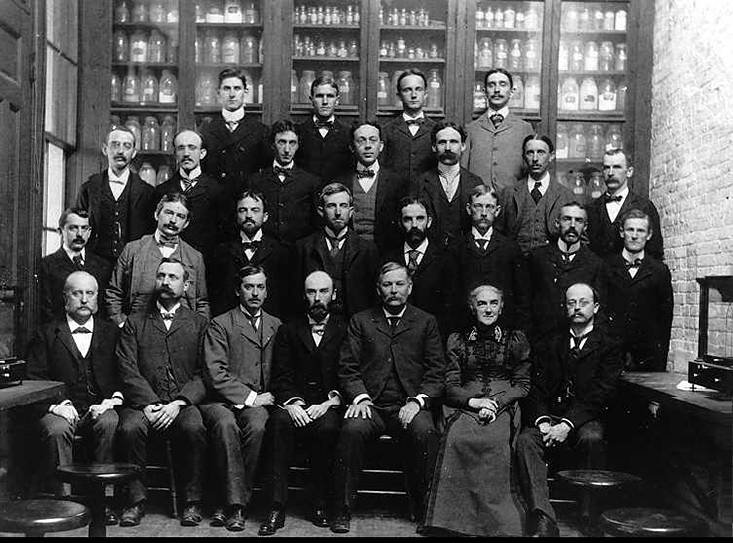
The recent outrage over lead contamination in the water supply of Flint, Mich. reminds us of how much is known about the history of lead poisoning.
In 1786, Benjamin Franklin wrote a letter about the harmful effects of lead. In describing the problem in distilleries and the printing trades, Franklin noted how resistant people can be when it comes to understanding public health and environmental issues.
Although it hardly seems creditable, the useful truth about lead in the form of paint, water pipes, and leaded gasoline is still not practiced.
Lead is the oldest and best known of environmental hazards.For over two millennia, overexposure to lead was known to cause hallucinations and severe mental problems.
During the Middle Ages, skeptics who did not believe in “spirits” were frequently referred to the lead mines to see for themselves the way the miners behaved. Early works on tradesmen’s diseases usually note, as did Bernardo Ramazzini in 1700, that: “The skin [of lead workers] is apt to bear the same color of the metal … Demons and ghosts are often found to disturb the miners.”
Lead is not just the scourge of miners and a few luckless refinery workers; it has also been called the “assassin of empires.” In a granulated compound similar to tetraethyl lead, the gradual and undetectable poison was called “succession powder” due to its use in regicides since the dawn of recorded history.
Egyptian hieroglyphics record such assassinations, while the Bible refers to poisons that may have been made of lead.20 In addition, the fall of the Roman Empire has been linked to lead poisoning since at least 1909 but it was commonly suspected since at least the mid-19th century.
In 1857, Scientific American noted: It is remarkable that this metal (lead), when dissolved in an acid, has the property of imparting a saccharine taste to the fluid. Thus the common acetate of lead is always called ‘sugar of lead.’ It was perhaps on this account that the Greeks and Romans used sheet lead to neutralize the acidity of bad wine — a practice which now is happily not in use since it has been found that all combinations of lead are decidedly poisonous.
Along with wine, other sources of lead poisoning in ancient Rome included piping, cookware, cups and plates. But the use of grape sweeteners made in lead vessels probably caused the most damage. Since the Romans did not have sugar, they frequently boiled down grape pulp (or “must”) and used large amounts as a condiment to sweeten their food. They called the pulp “sapa” or “difrutum.” According to lead historian and toxicologist Jerome Niragu: “One teaspoonful of sapa per day could cause chronic lead poisoning, and countless Romans would have consumed more than this dosage from their foods and drinks. … The Roman fondness for sweet and sour flavors is well known, and the cooks made common use of the cheap … sapa in their sauces and seasonings to assuage the appetites of their patrons.”
Thus, the Romans deliberately consumed large quantities of lead. Piping also contributed, although not as much, to lead poisoning. Roman engineer Vitruvius was aware of its problematic nature: “We can take example by the workers in lead who have complexions affected by pallor. For when, in casting, the lead receives the current of air, the fumes from it occupy the members of the body, and burning them thereon, rob the limbs of the virtues of the blood. Therefore it seems that water should not be brought in lead pipes if we desire to have it wholesome.”
The sterility and high infant mortality rates experienced by the ruling class during the Empire period, as well as reports of rapid increase of cases of gout where the symptoms directly mirror chronic lead poisoning, were probably results of eating foods sweetened with “sugar” of lead.
It should be noted that the history of lead poisoning in antiquity has been a matter of some dispute by industry. In 1971, when the Environmental Protection Agency began discussing a phase-out of leaded gasoline, Ethyl Corp. (New Market) officials claimed their opponents were embarked on a “witch hunt” and using “scare tactics” by blaming lead for the fall of the Roman Empire.
“The clincher by all prophets of doom is that someone started the rumor that lead was the cause of the fall of the Roman Empire,” said Ethyl vice president Lawrence E. Blanchard, Jr. “The legend always gets fuzzy — sometimes it is caused by lead-lined aqueducts, other times it is from their wine being drunk from lead-lined flasks.”‘
Perhaps the first early modern concern about lead poisoning as a public health problem is documented in the 18th century, when a British physician named George Baker became curious about the “Devonshire colic.” Each autumn, it seemed, there was an infestation of colic that tended to be more severe with the age of the patient. In 1767, Baker examined conditions in Devonshire and traced the colic back to apple cider made by presses lined with lead. He also noted that no similar colic attended the apple harvest in the cider drinking counties of Hereford, Gloucester and Worcester. The presses there had wooden sides without the lead linings. Baker’s paper to the Royal College of Physicians also showed that Devonshire cider itself contained lead. Rather than the praise that might have been expected, Baker was condemned by the clergy, by mill owners and even by fellow doctors.
Benjamin Franklin was also concerned about lead poisoning. In 1724, when Franklin worked as printer’s apprentice, he observed that the practice of heating lead type while cleaning off ink seemed connected to what was called “the dangles,” an extremely debilitating paralysis of the hands that “dangled” from the wrists for the rest of the worker’s life. In 1745, Franklin also published a paper on the “dry gripes,” or stomach cramps — an epidemic that plagued America that he traced to drinking rum distilled in vessels with lead coils and other parts. Franklin and Baker corresponded on scientific matters, and in 1768, Baker said his suspicions that lead might be cause of Devonshire colic “had been greatly confirmed by the authority of Dr. Franklin of Philadelphia.” Also around that time, Franklin obtained a list of patients in La Charite Hospital in Paris who had been hospitalized for symptoms that would today be diagnosed as lead poisoning and showed that the patients were involved in occupations that exposed them to lead.28 In 1786, he wrote a long letter to a friend following a conversation on the effects of lead.
Lead poisoning is often found in literature. One moving account was given by Charles Dickens:
I saw a horrible brown heap on the floor in the corner, which, but for previous experience in this dismal wise, I might not have suspected to be ‘the bed.’ There was something thrown upon it and I asked what it was. ‘Tis the poor craythur that stays here, sur; and ‘tis very bad she is, ‘tis very bad shes been this long time, and ‘tis better she’ll never be … and ‘tis the lead, sur.’ ‘The what?’ ‘The lead, sur. Sure, ‘tis the lead-mills, where women gets took on at 18 pence a day, sur, when they makes application early enough, and is lucky and wanted; and ‘tis lead pisoned she is, sur, and some of them gets lead pisoned soon, and some of them gets lead pisoned later, and some but not many, niver; and ‘tis all according to the constitooshun, sur, and some constitooshuns is strong, and some is weak, and her constitooshun is lead pisoned, bad as can be, sur3 … ‘
In the United States at the turn of the 20th century, concerns about worker health seemed to carry a flavor of “sentimentality if not socialism.” Problems like paralysis of the hands among workers in the lead trade were usually attributed to drinking or to a wife’s cooking. 31 It was difficult even to understand the scope of the problem — no law forced industries to admit researchers to conduct their studies. Many did so only after a considerable amount of persuasion and assurances that the results of a study would not be reported individually, but rather about an industry in general.
MORE
Tom Beller, The Toxic Legacy of Lead, New York Times, June 14, 2015.
Shorenstein Center, Resources on Lead Poisoning, January 2016

 Tiananmen Square protests crushed
Tiananmen Square protests crushed  Ford Quadracycle
Ford Quadracycle 
 Ixtoc I Oil Disaster
Ixtoc I Oil Disaster
 Environmental Action Archive
Environmental Action Archive Ellen Swallow Richards
Ellen Swallow Richards The hats that created bird sanctuaries
The hats that created bird sanctuaries  Pollution regs saved lives
Pollution regs saved lives ¶ A giant tree's death sparked the conservation movement in 1853. Terrific article by Leo Hickman of the Guardian on June 27, 2013. The
¶ A giant tree's death sparked the conservation movement in 1853. Terrific article by Leo Hickman of the Guardian on June 27, 2013. The ¶ Dymaxion car
¶ Dymaxion car  ¶ Aldo Leopold
¶ Aldo Leopold